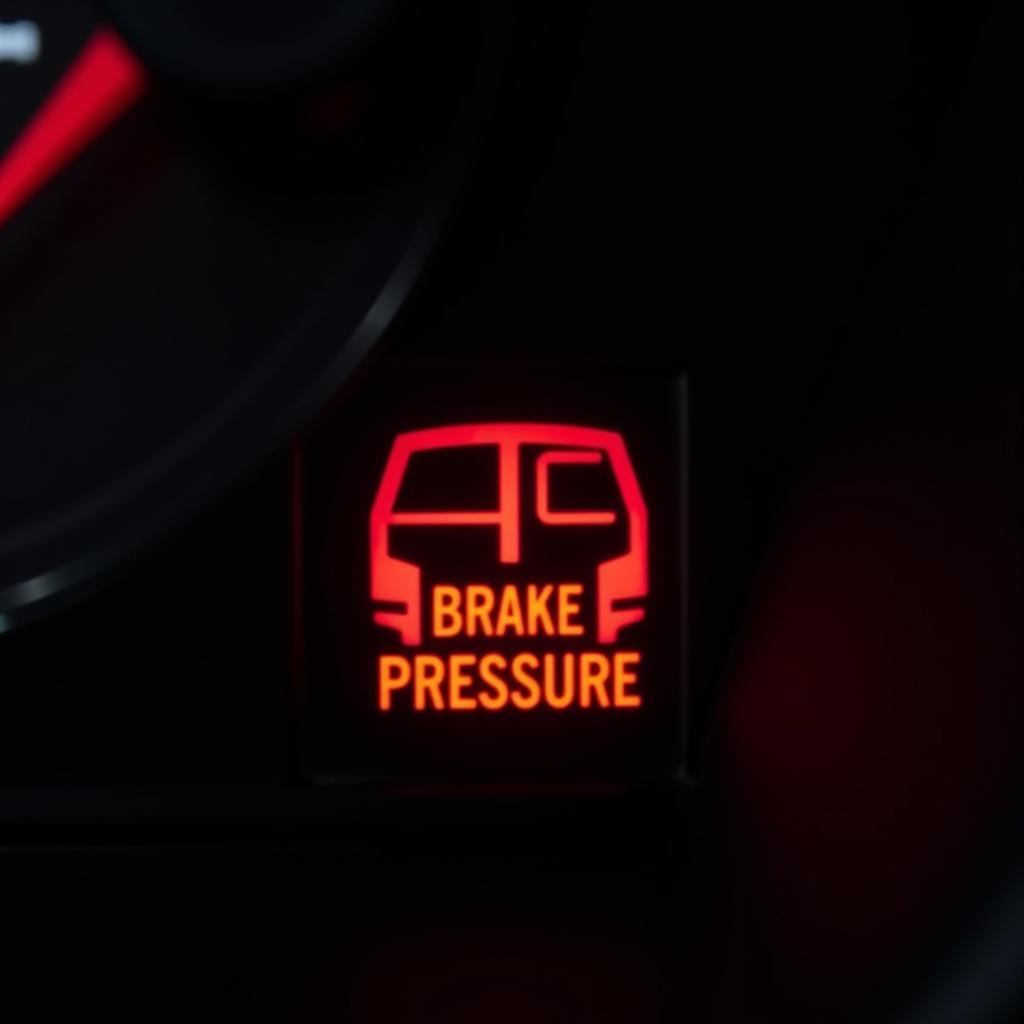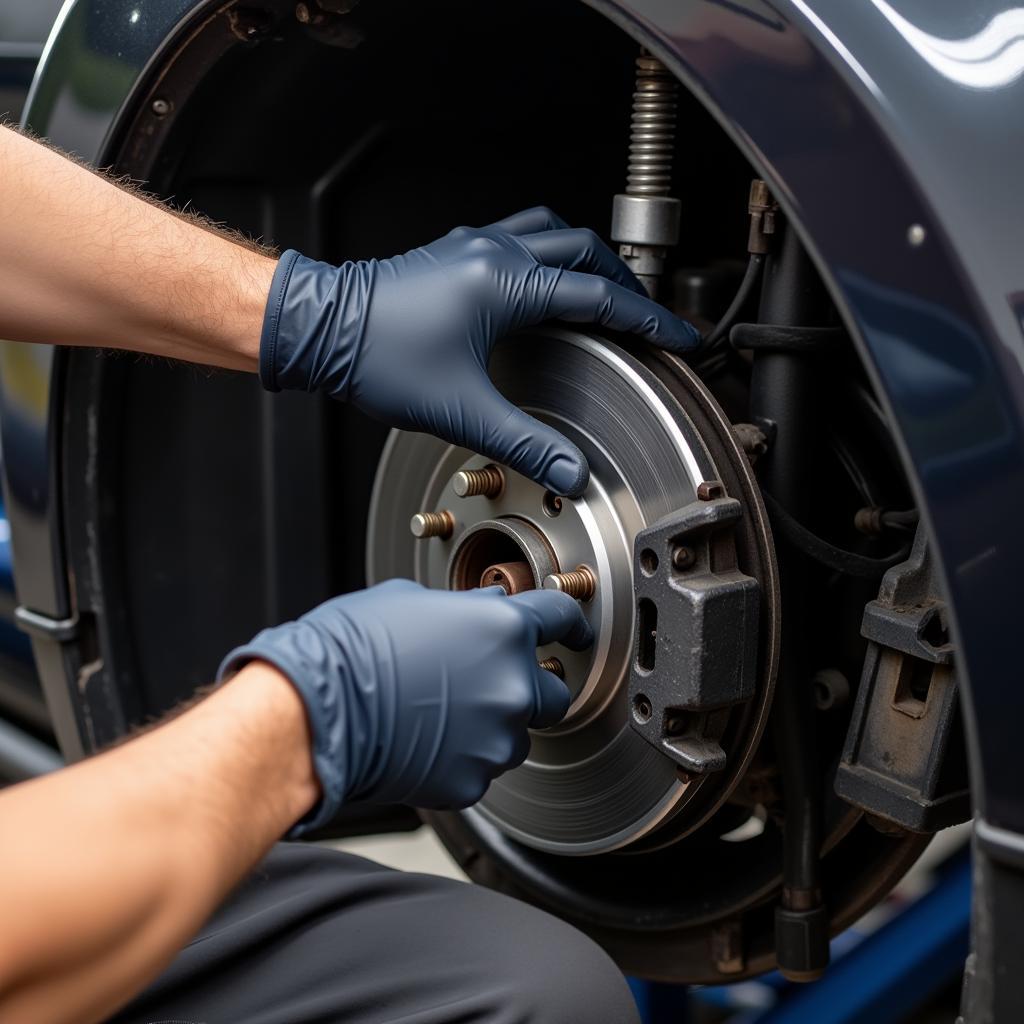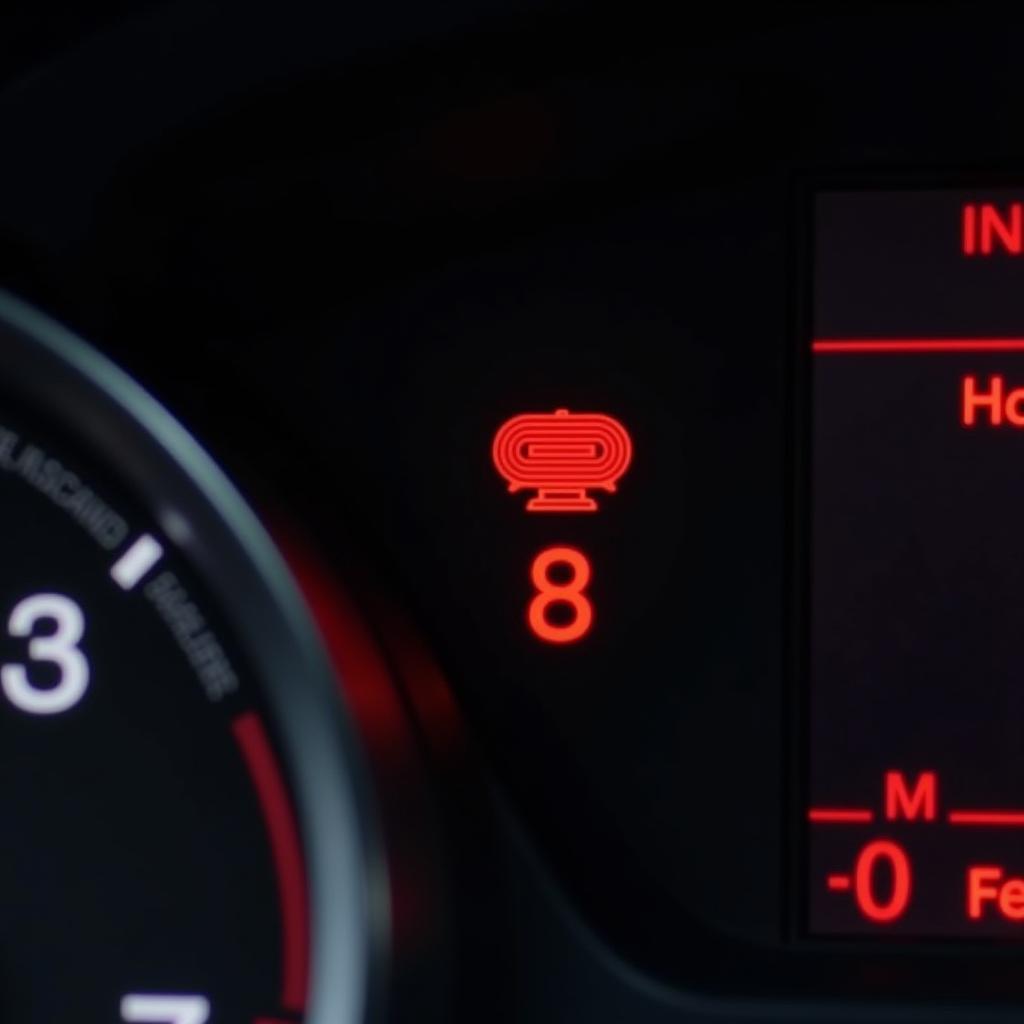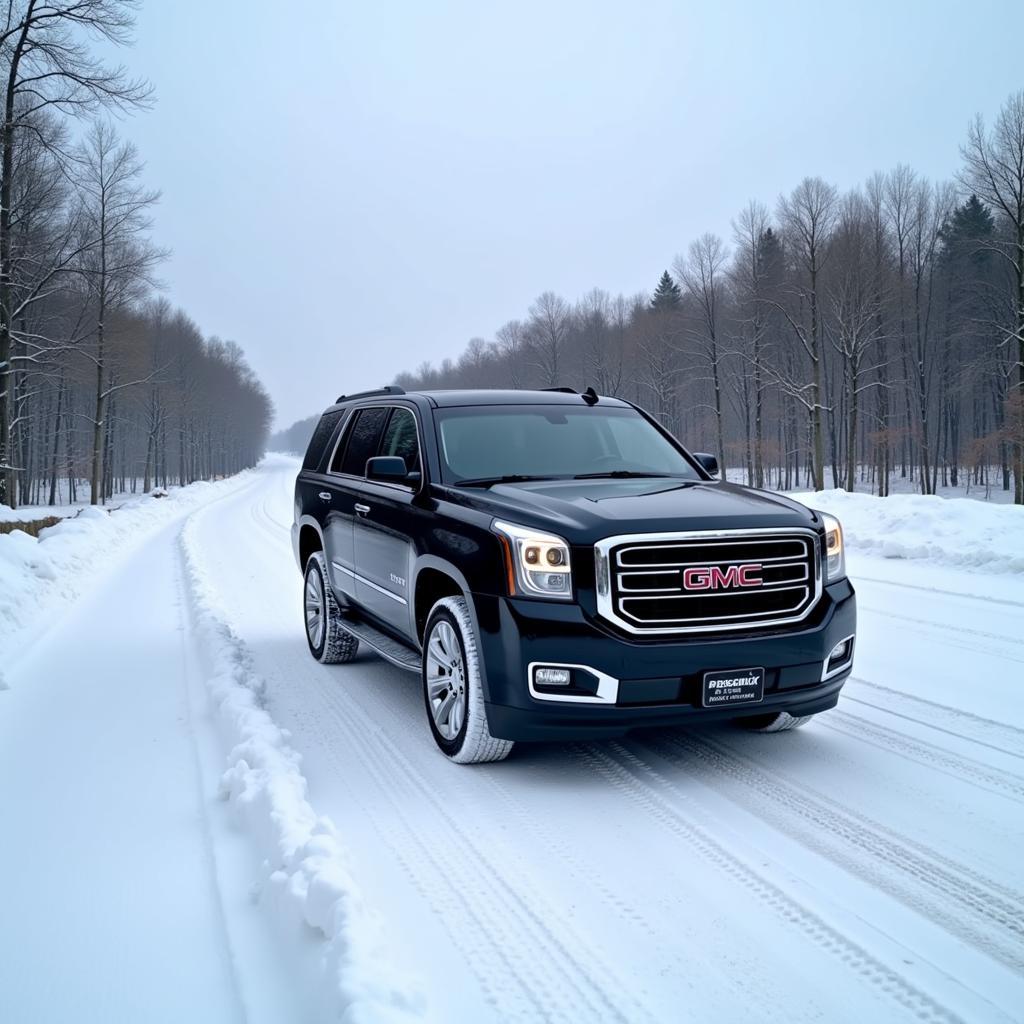The brake pressure warning light is one of the most important safety features in your vehicle. When it illuminates, it means there’s an issue with your braking system that requires immediate attention. Ignoring this warning light can significantly compromise your ability to stop safely, putting you and others at risk.
 Brake Pressure Warning Light on Dashboard
Brake Pressure Warning Light on Dashboard
Understanding Your Brake System
Before delving into the causes of a brake pressure warning light, it’s helpful to understand the basics of how your car’s braking system works. In essence, when you press the brake pedal, it activates a hydraulic system that amplifies the force you apply. This amplified force is then transmitted to the brakes at each wheel, slowing down or stopping the vehicle.
The system relies on brake fluid to transmit this hydraulic pressure. When the brake fluid level drops too low, or there’s a leak in the system, the pressure drops, triggering the warning light.
Common Causes of a Brake Pressure Warning Light
A brake pressure warning light can illuminate for several reasons. Here are some of the most common culprits:
- Low Brake Fluid: This is the most common cause. Brake fluid levels can decrease over time due to minor leaks or as brake pads wear down.
- Brake Fluid Leak: A leak in the brake lines, hoses, calipers, or wheel cylinders can lead to a rapid loss of brake fluid and pressure.
- Worn Brake Pads: As brake pads wear down, the calipers need to extend further to engage the rotors. This requires more brake fluid, potentially leading to a low fluid level warning.
- Faulty Brake Master Cylinder: The brake master cylinder is responsible for generating the hydraulic pressure in the braking system. A faulty master cylinder can lead to a loss of pressure and trigger the warning light.
- ABS Problem: While less common, a problem with your Anti-lock Braking System (ABS) can also trigger the brake pressure warning light.
What to Do When Your Brake Pressure Warning Light Comes On
If your brake pressure warning light comes on, it’s crucial to take immediate action to ensure your safety and the safety of others:
- Pull Over Safely: As soon as it’s safe, pull your vehicle over to the side of the road and come to a complete stop.
- Check Your Brake Fluid Level: With the engine off, locate the brake fluid reservoir under the hood. Consult your owner’s manual if you’re unsure of its location. Carefully check the fluid level. It should be between the minimum and maximum markings.
- Add Brake Fluid (If Necessary): If the brake fluid level is low, you can try adding more to bring it back to the appropriate level. Use only the type of brake fluid recommended in your owner’s manual.
- Inspect for Leaks: Carefully examine the area around the brake master cylinder, brake lines, and near the wheels for any signs of fluid leaks. Brake fluid is typically clear or slightly yellowish and has a slightly oily texture.
 Mechanic Checking Brake Fluid Level
Mechanic Checking Brake Fluid Level
When to Seek Professional Help
While adding brake fluid might temporarily address the issue, it’s crucial to remember that the brake pressure warning light signals a potential problem with your braking system.
Seek immediate professional help if:
- You notice a brake fluid leak.
- Your brake pedal feels spongy or goes all the way to the floor.
- Your vehicle pulls to one side when braking.
- You hear unusual noises when applying the brakes.
- The warning light remains on even after adding brake fluid.
Attempting to diagnose or repair brake problems yourself can be dangerous if you’re not a qualified mechanic.
Remember: A functioning brake system is essential for your safety and the safety of others.
“Never ignore a brake pressure warning light,” says John Smith, a senior automotive engineer at [Company Name]. “It’s always better to err on the side of caution and have your brakes checked by a professional.”
Remote Diagnostics and Repair Options
In today’s technologically advanced world, remote diagnostics and repair solutions are becoming increasingly common in the automotive industry.
triumph tr6 brake pressure warning light
If you’re experiencing brake problems and are unsure about the cause, you can connect your vehicle to a remote diagnostics tool. These tools can read your vehicle’s fault codes and transmit them to a qualified technician who can help you determine the root cause of the problem.
In some cases, technicians can even perform software updates or reprogramming remotely to resolve certain brake system issues.
low brake pressure warning light 90 lbs
Conclusion
The brake pressure warning light is a crucial safety feature that should never be ignored. Understanding its causes and knowing how to respond can help you stay safe and avoid potentially dangerous situations. If your brake pressure warning light illuminates, prioritize your safety by pulling over when it’s safe to do so, checking your brake fluid, and seeking professional assistance if needed.


